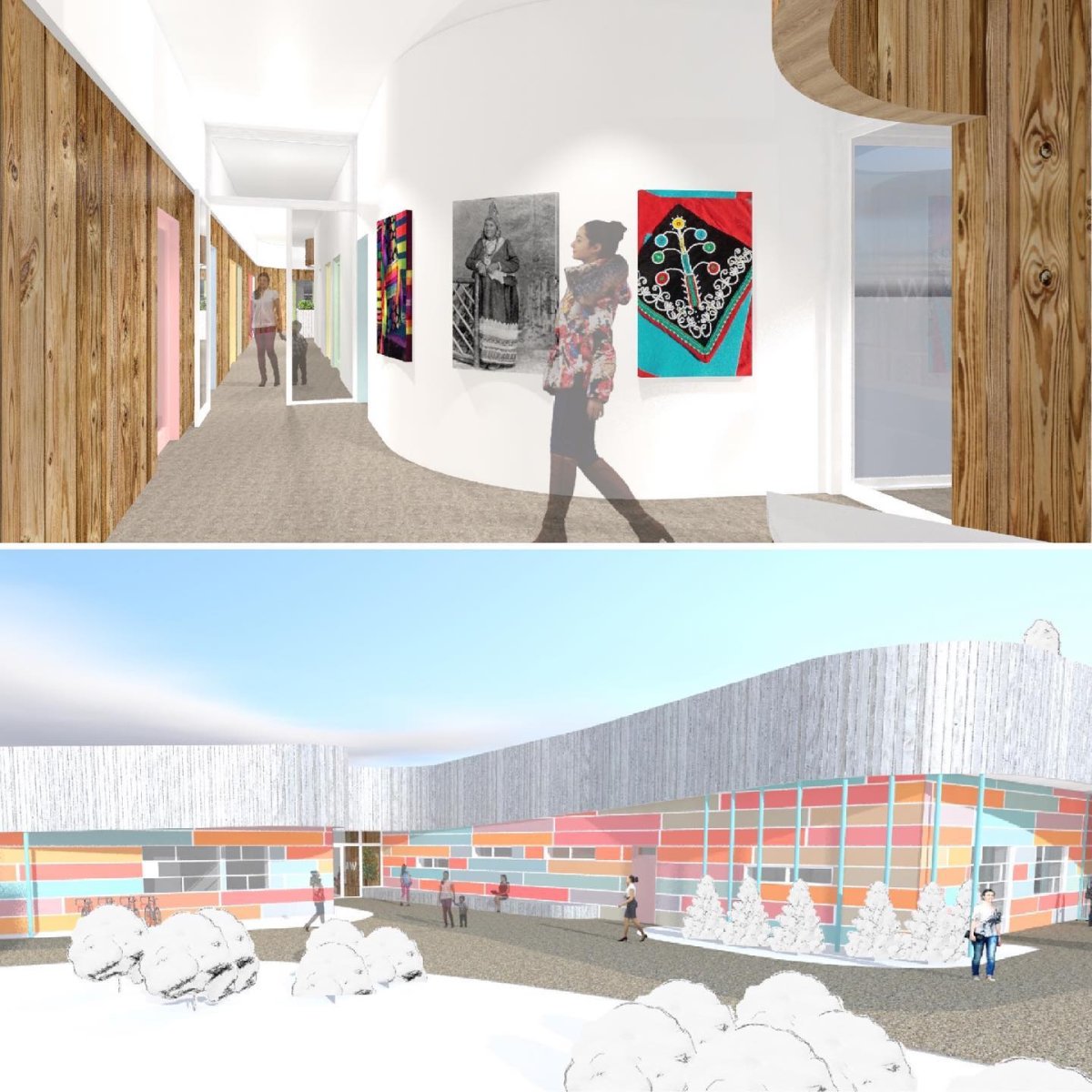The Nova Scotia Native Women’s Association seeks to build a new centre that will stand proudly as a symbol of resilience and healing, but it has been a challenge in the last two years to secure funding.

Project manager Zabrina Whitman said the centre would cost $6.5 million, and it needs to break ground this fall.
“After the first bodies were found in Kamloops, B.C., I said to folks that if we already had the centre, individuals, at least in Nova Scotia, would have a support system to aid them through the trauma that they are experiencing,” Whitman said.
READ MORE: Mi’kmaw elders, Halifax council suggest changes to place names with ‘Indian’ in them
She said the legacy of the residential school system continues to impact Indigenous communities, but by supporting the Mi’kmaq in building the Resilience Centre, then a tangible difference can be made.
“The centre will look at cultural issues, it will look at healing, and it will have our elders there and traditional practices for healing,” Whitman said.
The centre will also look at economic development and how, for example, traditional crafts can be used to support women’s economic success.
Child care and other family support will also be available to aid mothers and women in their healing.
But there are many challenges standing in the way of making this project happen as the organization continues to seek federal funding.

Get breaking National news
“We are a female indigenous organization. So a lot of the time, the challenge that Nova Scotia Native Women have experienced … is that they don’t seem to fit into any of the boxes…. And so that seems to be the challenge all along for us to try to secure infrastructure dollars,” Whitman said.
She said that a year ago, the group was trying to secure funding around the same time when the National Action Plan was supposed to have been released on Missing and Murdered Indigenous Women, Girls, and LGBTQ2 people.
READ MORE: Former Cornwallis Park officially renamed Peace and Friendship Park
“It just demonstrates at a very real level the issues of the systemic challenges that we have for indigenous women and girls. And fast forward to this year. We’re seeing it again in different ways,” Whitman said.
“We’re still waiting for someone to come to the table and say we have funds for you. And it’s not that we’re not trying diligently. … We keep trying to do applications and we fill out applications and we don’t meet those guidelines,” she added.
The organization has recently applied to the federal government for what’s called the Green and Inclusive Energy Initiative, and Whitman said they meet each of its requirements.
“We’re hoping that they can provide us all the funds that we need,” she said.

In the meantime, Whitman said people can help by donating to the project, writing to their MLAs and MPs, and imploring them to fund this project.
“When we talk about how you address systemic issues, listen to our voices. We know what’s best for us. And in Nova Scotia, we’re saying it’s this. So please listen to us and support us,” she said.
At the moment, Whitman said the Nova Scotia Native Women’s Association is working out of an office in Truro, N.S., that doesn’t meet health and occupational health and safety needs.
The association can’t provide programs and services to clients in the space it does have, so it rents space in hotels and other centres.
- ‘Alarming trend’ of more international students claiming asylum: minister
- TD Bank moves to seize home of Russian-Canadian jailed for smuggling tech to Kremlin
- Why B.C. election could serve as a ‘trial run’ for next federal campaign
- Justin Trudeau headed to UN Summit of the Future amid international instability
READ MORE: Memorial walk in Halifax held for residential school victims, survivors
“But the challenge with those is … it’s not supporting our communities because we can’t, for instance, do catering or bring in local individuals,” Whitman said.
“But they’re also not safe spaces because we can’t always do traditional practices, like smudging. Sometimes we experience racism in some of these spaces as well. So it makes individuals uncomfortable and can be traumatizing in and of themselves,” she added.
The new centre will be a safe space conducive to healing and will embody the Ribbon Skirt in design and practice.
According to an APTN National News article, “ribbon skirts are historical and traditional clothing that honour First Nations heritage and help represent causes like missing and murdered Indigenous women and girls. They’re considered an expression of history, resilience and character, but aren’t necessarily only for ceremonies like powwows, events and funerals.”
“When you look at the building in itself, we really want it to embody strength and healing and feel like a place of safety and family and warmth. And that’s what a woman is,” Whitman said.









Comments